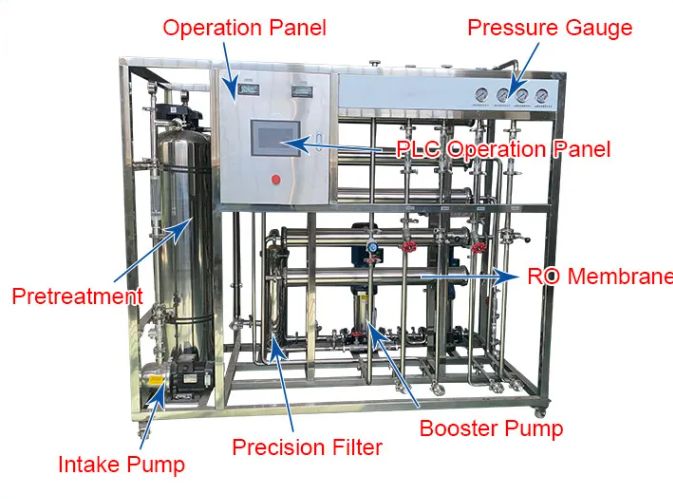Author: Site Editor Publish Time: 2024-03-05 Origin: Site






An RO (Reverse Osmosis) system is a highly effective water filtration technology that is used to remove a wide range of contaminants from water.

The process of reverse osmosis involves forcing water through a semi-permeable membrane that filters out various impurities, including dissolved solids, bacteria, viruses, and other harmful substances.
Dissolved solids: An RO system can effectively remove dissolved solids such as calcium, magnesium, and iron, which can cause hard water and affect the taste and quality of water.
Bacteria and viruses: Reverse osmosis systems are highly effective at removing bacteria and viruses from water, making it safe for drinking and other household uses.
Lead: Lead is a toxic metal that can be found in tap water, especially in older homes with lead pipes. An RO system can remove lead from water, protecting your family’s health.
Chlorine: Chlorine is commonly added to tap water as a disinfectant, but it can leave an unpleasant taste and smell in water. An RO system can remove chlorine from water, improving its taste and quality.
Fluoride: While fluoride is often added to tap water to help prevent tooth decay, some people prefer to avoid it due to concerns about its potential health effects. An RO system can remove fluoride from water if desired.
Arsenic: Arsenic is a toxic metal that can be found in groundwater in some areas. An RO system can remove arsenic from water, ensuring that it is safe for consumption.
Selenium: Selenium is another trace element that can be found in water, and while it is essential for human health, excessive amounts can be harmful. An RO system can remove selenium from water if necessary.
Nitrates: Nitrates are common in agricultural runoff and can contaminate groundwater. High levels of nitrates in drinking water can be harmful, particularly for infants. An RO system can remove nitrates from water, ensuring its safety for all members of the household.
Perchlorate: Perchlorate is a chemical compound that is commonly found in groundwater and can interfere with the function of the thyroid gland. An RO system can remove perchlorate from water, reducing the risk of exposure.
Pharmaceuticals: Some pharmaceuticals, such as antibiotics and hormones, can pass through sewage treatment plants and end up in waterways. An RO system can remove these contaminants from water, ensuring that it is free from potentially harmful drugs.

In summary, an RO system is an effective way to filter out a wide range of contaminants from water, including dissolved solids, bacteria, viruses, lead, chlorine, fluoride, arsenic, selenium, nitrates, perchlorate, and pharmaceuticals. By using an RO system, you can ensure that your family has access to clean, safe, and great-tasting water for drinking, cooking, and other household uses.
